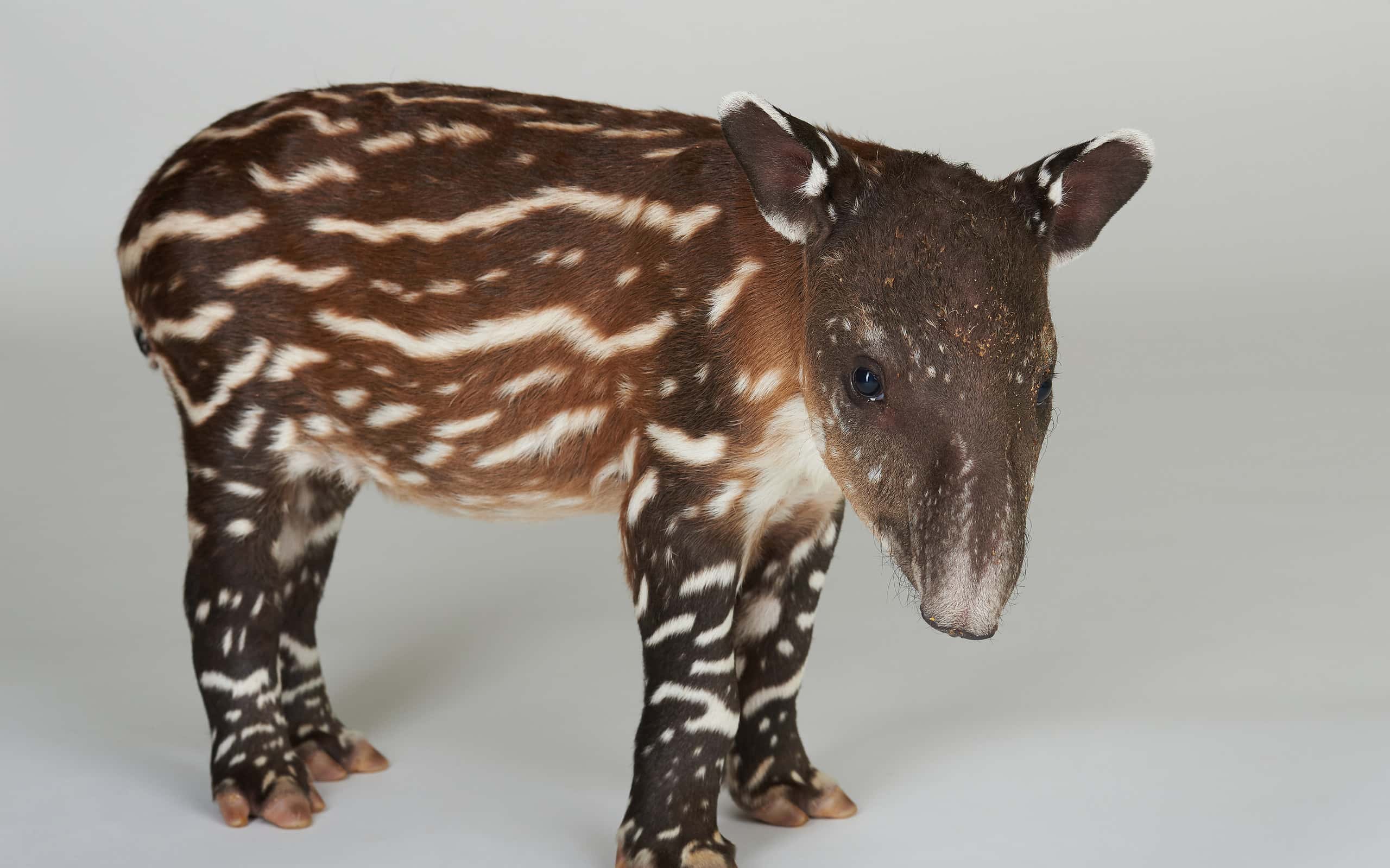Basic Information
There are four living species (types) of tapirs in the world: the Malayan tapir, the mountain tapir, the Baird’s tapir, and the lowland tapir!

Did you know?
Search name of person, animal, place, thing, etc.
Share
There are four living species (types) of tapirs in the world: the Malayan tapir, the mountain tapir, the Baird’s tapir, and the lowland tapir!
Tapirs belong to the family Tapiridae and are related to horses and rhinoceroses, forming part of the order Perissodactyla (animals with odd numbers of toes)!
A group of tapirs is called a “candle” or sometimes a “parade” of tapirs!
Tapirs have been around for about 50 million years, making them one of the oldest mammal (warm-blooded animal) families still alive today!
The word “tapir” comes from the Tupi language of Brazil, where native people called them “tapyra”!
Adult tapirs can live up to 35 years in captivity (in zoos), though they typically live 20–30 years in the wild!
A male tapir is called a “bull,” a female is called a “cow,” and a baby tapir is called a “calf”!
Tapirs are herbivores (plant-eaters), which means they only eat plants!
The Malayan tapir is the largest of all tapir species (types) and can weigh up to 720 pounds (326 kilograms)!
Despite their large size, tapirs can run at speeds of up to 30 miles per hour (48 kilometers per hour)!
Tapirs have prehensile (can grab things) noses like tiny trunks that can grab leaves and fruit from tree branches!
Tapirs have super-flexible, strong snouts made of many muscles, so they can grab leaves, smell the jungle, and even use it like a snorkel!
Tapirs have four toes on their front feet and three toes on their back feet, helping them walk through muddy ground!
The Malayan tapir’s distinctive (special) black and white coloring helps break up its outline in moonlight, making it harder for predators (animals that hunt them) to spot!
All baby tapirs are born with brown fur and white stripes and spots, which help them blend in with sunlight coming through the forest trees!

Tapirs have special grooved (ridged) teeth that help them grind up tough plant material!
A tapir’s eyes can see well in the dark because they have a reflective layer called the tapetum lucidum (like a mirror in their eyes), just like cats!
An adult tapir’s body can be as long as a small car — up to 8 feet (2.4 meters) in length!
Tapirs have excellent hearing and can rotate (turn) their ears to listen for danger without moving their heads!
A tapir’s thick skin can be up to 1.2 inches (3 centimeters) thick, helping protect them from scratches in dense (thick) forests!
A tapir’s footprint is shaped like an oval and can be up to 6 inches (15 centimeters) long — about the size of a grown-up handprint in mud!
Tapirs can’t see bright colors very well. Instead, they use their super senses — like sniffing and listening — to find yummy fruits in the jungle!
A tapir’s tongue can be up to 14 inches (35 centimeters) long!
Tapirs have special pads on their feet that help them walk quietly through the forest!
The Malayan tapir’s black and white pattern is called “countershading” (a special way of hiding) and works like natural camouflage (helps them blend in)!
Tapirs have small tails that are only 2–4 inches (5-10 centimeters) long!
Baby tapirs’ striped patterns look similar to those of watermelons!
Tapirs have whiskers on their nose that help them sense their surroundings!
A tapir’s upper lip and nose are combined into one flexible organ called a proboscis (trunk-like nose)!
Tapirs are excellent swimmers and can use their nose like a snorkel (breathing tube) to breathe while underwater!
Tapirs communicate (talk to each other) through high-pitched whistles, squeaks, and clicks that can travel long distances through the forest!
Adult tapirs are usually solitary (live alone) animals, preferring to live and travel alone except during mating season!
Tapirs mark their territory (home area) using urine and special scent glands, creating a natural map of their home range!
Tapirs are most active at dawn and dusk, making them crepuscular (active during twilight) animals!
When threatened, tapirs can run straight into deep water and walk along the bottom to escape predators (animals that hunt them)!
Tapirs have excellent memories and can remember paths to favorite feeding grounds even after many months!
Baby tapirs learn to swim when they are just a few days old!
Tapirs take regular mud baths to cool off and protect their skin from insects and sunburn!
When tapirs greet each other, they often touch noses to share information through scent!
Tapirs can walk sideways to squeeze through narrow gaps in the forest!
Tapirs wave their trunks in the air to catch scents from far away!
Tapirs can walk underwater along river and lake bottoms to find aquatic (water) plants!
Each tapir creates and maintains (takes care of) several regular paths through their territory!
Tapirs sometimes rub their bodies against trees to leave their scent!
Tapirs can be found in South America, Central America, and Southeast Asia, living in rainforests, cloud forests, and grasslands!
Mountain tapirs live at elevations (heights) of up to 14,000 feet (4,300 meters) above sea level in the Andes Mountains!
Each tapir maintains (takes care of) a home range of about 1-2 square miles (2.6-5.2 square kilometers)!
Tapirs create paths through the forest that other animals use, making them “ecosystem engineers” (animals that help build their environment)!
Tapirs can hold their breath underwater for up to 90 seconds!